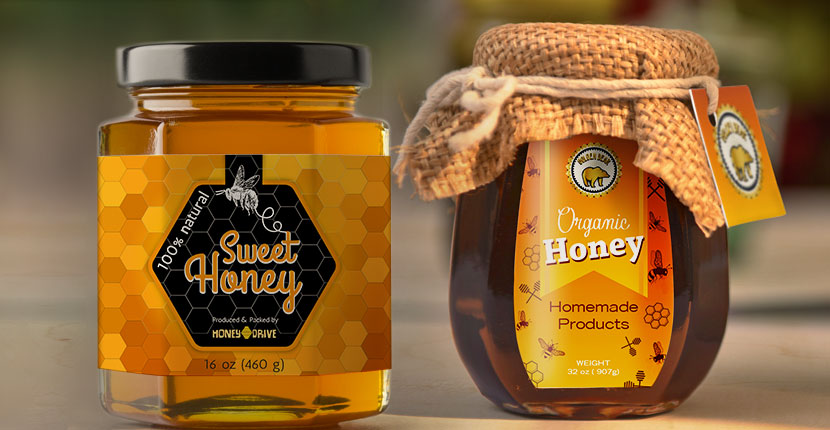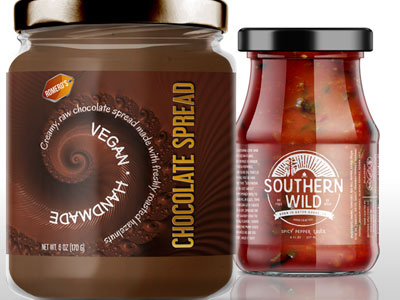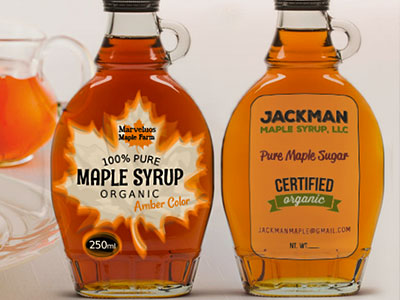According to the U.S. Department of Agriculture (USDA), there were 2.74 million colonies producing honey in the U.S. in 2014 and it seems the production of honey is rising each year. Though shortages have been reported on the international honey market, honey production is certainly a great business opportunity throughout the world.
Honey is a natural sweetener created from flower nectar by bees, bumblebees, honey wasps and some other insects. Though completely original in its natural form, some mass scale honey producers are giving antibiotics to bees or contaminating the honey in other ways for different purposes. That’s why honey buyers and importers have to be extra careful about the quality of the honey they are purchasing. Honey labels are very important in this respect. They tell us where the product came from, who manufactured it and if there are any other ingredients added. If the honey is labeled “Honey”, or marked with more informative labels about the honey’s source, such as “Lavender Honey”, “Clover Honey”, etc., you don’t need to include the ingredients section on the label, since honey is the only ingredient in a pure, natural honey. However, If you add sweeteners or some other ingredients, then you need to make that clear. On FDA website you’ll find detailed information about the requirements for proper labeling.
Beekeeping and Honey Labeling 101
The bee’s greatest value to man is the pollination of flowers and agricultural plants. They pollinate about 1/3 of all American agricultural crops. Without bees it would be difficult to grow: cucumbers, almonds, avocados, blueberries, pears, carrot seed, melons, apricots, cherries, apples, cranberries, and many other fruits and vegetables. In order to have a healthy economy and diversity of food products, it is important to maintain healthy bee colonies. Today many people are starting their own bee colonies even in urban settings, and contributing to the well balanced ecosystem.
Apart from their agricultural work, bees are also valued for producing beeswax, pollen, propolis, bee venom, and most importantly, honey. The market for locally produced and specialty honey is particularly strong in the US, so local beekeepers can easily be found at farmers markets, roadside stands or at their home. Urban and local beekeepers are also growing in number in other western countries such as Canada and UK. They often rely on useful information and beekeeping tutorials from excellent local resources and blogs such as Talking with Bees, Urban Bee Network and many more.
Being successful at beekeeping takes a little more than evaluating the honey’s taste. The following infographic explains some of the obstacles beekeepers experience in their work and gives practical tips on how to keep the bees healthy and alive, and how to properly label honey jars to better inform honey consumers about the product.
Embed this infographic on your website:

Embed this infographic on your website:
Information on labels (or their lack of) can sometimes help us avoid suspicious products, such as:
- Honey imported from China. Many of their honey products are tainted with illegal antibiotics and heavy metals.
- Adulterated honey, which means that it is mixed with sugar syrups, water, etc. or contaminated with antibiotics and heavy metals.
- Honey whose pollen is removed via ultrafiltration, a process which strips the honey of all its vital elements. The FDA does not recognize ultra-filtered honey as honey.
Of course, no label will explicitly state that the honey has been adulterated, but if a product contains claims such as “pure” or “raw” and comes from a trustworthy manufacturer, chances are higher that the honey is of high quality.
Here are some of the questions that consumers are interested in and that labels might be able to help them out with:
Why is honey filtered?
Many American consumers prefer clear and flowing honey that does not crystallize. There are different filtration processes that remove insect parts, dust, wax bits and pollen from honey, making it smooth and clear.
Why is honey pasteurized?
Pasteurization prevents honey crystallization and kills yeast. It lasts longer in liquid state than unpasteurized honey, and many consumers prefer it for its smoother texture.
Why is pollen important?
Pollen grains can help trace honey back to its geographical origins. Besides, it contains a high level of antioxidants, proteins and vitamins, enzymes that can aid in digestion, and many other healthful components.
Is honey labeled organic really organic?
Honey is labeled organic only when a set of strict requirements has been met. However, It is very difficult to ensure that the bees don’t travel further from their organic land and collect non-organic nectar.
Beekeepers and honey producers should learn the value of producing informative labels and earning the consumers trust.
Sticky Labels for Honey Jars and Bottles
Labels for honey are usually applied on glass jars or plastic bottles, so the labels need to be made from a flexible and waterproof material in order to adhere well to the packaging surface. Vinyl label facestock with a strong, permanent adhesive is a good choice for honey stickers. They can also be made from paper, but the paper would need to be laminated or created with an extra layer of protection against the elements. At FoodPackagingLabels.net we know all about creating perfect blank and custom honey jar labels, so get in touch to learn more about our wide range of honey label sizes, shapes, materials and color options.



